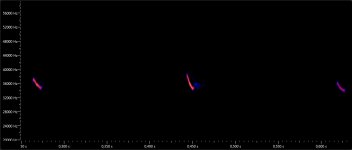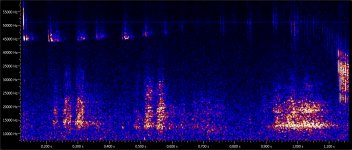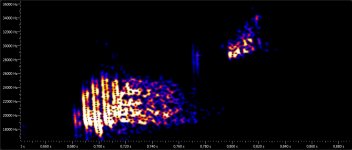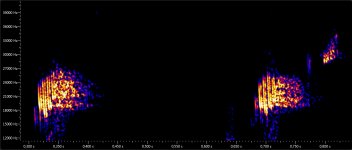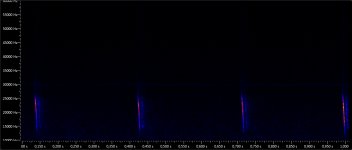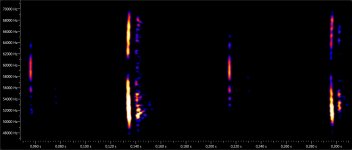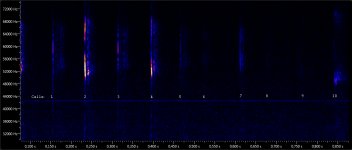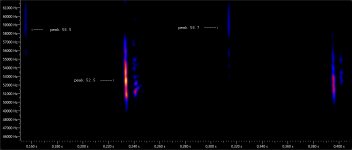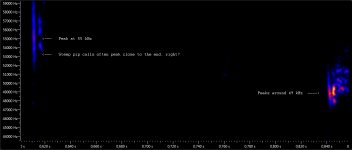Harry, I am very grateful for your help. And your last sentence is surely true:
There are cases where it is difficult to tell whether the echo call is from Pippip and Pippyg. No need to ID every call.
From my 2,000+ bat call files only one was a Soprano pipistrelle (Pippyg), so another sighting of the species would only be welcome. But if this file remains a puzzle, no problem. It's basically like birding: an unidentified bird is the best encouragement to re-read the reference works for your next field trip.
It seems plausible that it is some Pipistrelle. Actually, the recording was made in a little uphill park, diameter ~200 m, green island in a sea of houses. The only visit to this place (when I didn't have time for a longer walk) resulted in 19 recordings of bat calls: 18 Common pipistrelles plus "The Puzzle".
As the mic is sensitive well above the Nyquist frequency, you can see a suggestion that your sound could have a form FM +QCF. Check your file with audacity, FFT length 128, and look at the strong sound at sec 3.00, and note how your sound looks like. Imagine a Pippip or Pippyg/Minsch call when it goes from open environment (QCF -like call) into a cluttered environment (=> FM call), and mirror it around the 60kHz line. That's when you can get something like this.
This is a bit over my head, sorry. I try to wrap my mind around it, but not too successfully. Looking in Audacity, I can change the FFT window setting from 256 (default) to 128, OK. Then I can zoom in at sec 3.00 and study the strong pulse. But all I see in zoom view are some sine waves.
I'd much prefer to "get it" in BatExplorer. I understand that aliasing distorts the picture, in particular that we must ignore what happens above 60 kHz. And perhaps finer details get lost, like the inverted "j" shape of a pip call. However, my problems go deeper: shouldn't peak frequency still be a strong hint for a possible identification? What I see here in BatExplorer (you can open the file in BE and check yourself) is a sequence of ten calls. Some are weak and not very informative, but still it appears to me that all the sound comes from one single bat. (see picture 1)
If we assume, for a moment, that there are two bats: then the odd signals 1, 3 and so on could come from a Soprano pipistrelle. The signals 2, 4 ... would still be VERY high for a Common pip, at 52.5 kHz. (see picture 2)
The end of the sequence is shown in picture 3. Here we have the last call (#10 in the overview) peaking at 49 kHz. Another difference to normal Pipistrelle echolocation calls is the observation that the strong calls 2, 4, ... all peak at the middle of the call, not close to the end, as in the usual inverted j shape.
So this recording is hard to explain. Maybe a rare social call or something?




